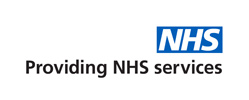Public Service Announcement – Potent synthetic opioids implicated in heroin overdoses and deaths
In the past 8 weeks, there have been an elevated number of overdoses (with some deaths) in people who use drugs primarily, but not limited to heroin. However, adulterated heroin is not the only risk – there have been findings of potent synthetic opioids in fake oxycodone tablets, and less commonly in fake or ‘street’ benzodiazepines (such as Diazepam) and in synthetic cannabinoids (such as ‘Spice’).
There is an increased possibility of overdose arising from ‘heroin’ containing synthetic opioids, being able to recognise possible symptoms of overdose and respond appropriately is crucial. The GOV.UK website has the following guidance prepared:
Drug supplies change, best test first
- what’s in your drugs can change frequently and your dealer doesn’t always know what’s in them or how powerful they may be
- best start with a small amount or inject slowly to test the effect
Look out for your mates
If possible, use with your mates. Using alone is much more risky as there is no one to look out for you if you overdose.
Look out for the signs of overdose
An overdose won’t always look the same but some of the signs to look out for are:
- falling unconscious
- very light shallow breathing or no breathing
- loud raspy ‘snoring’ or gurgling
- blue or pale lips or fingertips
If any symptoms are present, call 999 for an ambulance immediately
Naloxone – get it, carry it, use it
The main messages for giving someone naloxone are:
- if someone overdoses act fast, don’t wait to see if they will recover – you could save their life
- remember, call an ambulance immediately
- check the person is breathing
- put them in the recovery position: on their side with their head resting on their arm
- give them naloxone as soon as possible

